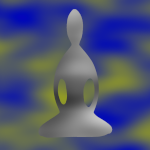Dear Friends,
The Buddha gave advise on bringing mindfulness to states of mind (thoughts, emotions):
“And how does a monk remain focused on the mind in & of itself? There is the case where a monk, when the mind has passion, discerns that the mind has passion. When the mind is without passion, he discerns that the mind is without passion. When the mind has aversion, he discerns that the mind has aversion. When the mind is without aversion, he discerns that the mind is without aversion. When the mind has delusion, he discerns that the mind has delusion. When the mind is without delusion, he discerns that the mind is without delusion.”
… And he carries on with several other examples…
https://www.accesstoinsight.org/tipitaka/mn/mn.010.than.html
What’s interesting to me is the Buddha doesn’t say “if you’re mindful, you won’t have aversion”, but rather, “if you’re mindful, you’ll notice that you have aversion”. So noticing aversion (or any of the other things) is normal. We don’t have to suppress these experiences, just notice them.
Gil Fronsdal explains it in this way: “No emotion is inappropriate within the field of our mindfulness practice. We are trying to allow them to exist as they arise, without reactivity, without the additional complications of judgment, evaluation, preferences, aversion, desires, clinging or resistance.”
https://www.insightmeditationcenter.org/books-articles/the-issue-at-hand/en/15/
One way that helps me to notice emotions without the judgment, etc. is to view what’s coming up with curiosity. For example, I find it useful to practice “RAIN”.
There are several variations of this acronym, but they generally follow this pattern:
Recognize when a strong emotion is present
Allow or acknowledge that it’s there
Investigate the body, emotions, and thoughts
Non-identify with whatever is there (other variations on this one include Need, as in what do I need right now, or Nourish with self-compassion, especially if this is something difficult)
(e.g. see http://blogs.psychcentral.com/mindfulness/2010/03/the-rain-practice-mondays-mindful-quote-with-rumi/)
For the “Investigate” step, I found the ideas in the following article to be a neat way to be curious about the body sensations associated with an experience:
Body Atlas Reveals Where We Feel Happiness and Shame
http://blogs.discovermagazine.com/d-brief/2013/12/30/body-atlas-reveals-where-we-feel-happiness-and-shame/#.VqL9ECorJhE
“new research reveals that emotional states are universally associated with certain bodily sensations, regardless of individuals’ culture or language”
There’s a “heat map” in that article that shows where different emotions are experienced in the body. So now, when I notice anxiety or surprise or whatever, I can imagine myself completing a “heat map” of my body – where is this experienced in the body? I can feel like I’m a scientist investigating this experience instead of getting carried away with the story.
Here’s a brief guided meditation by Donald Rothberg on bringing mindfulness to thoughts and emotions (~13 minutes). Maybe you can practice RAIN or try investigating the heat map in your body when something arises…
https://www.dharmaseed.org/teacher/55/talk/17383/
With best wishes,
Andrea G
